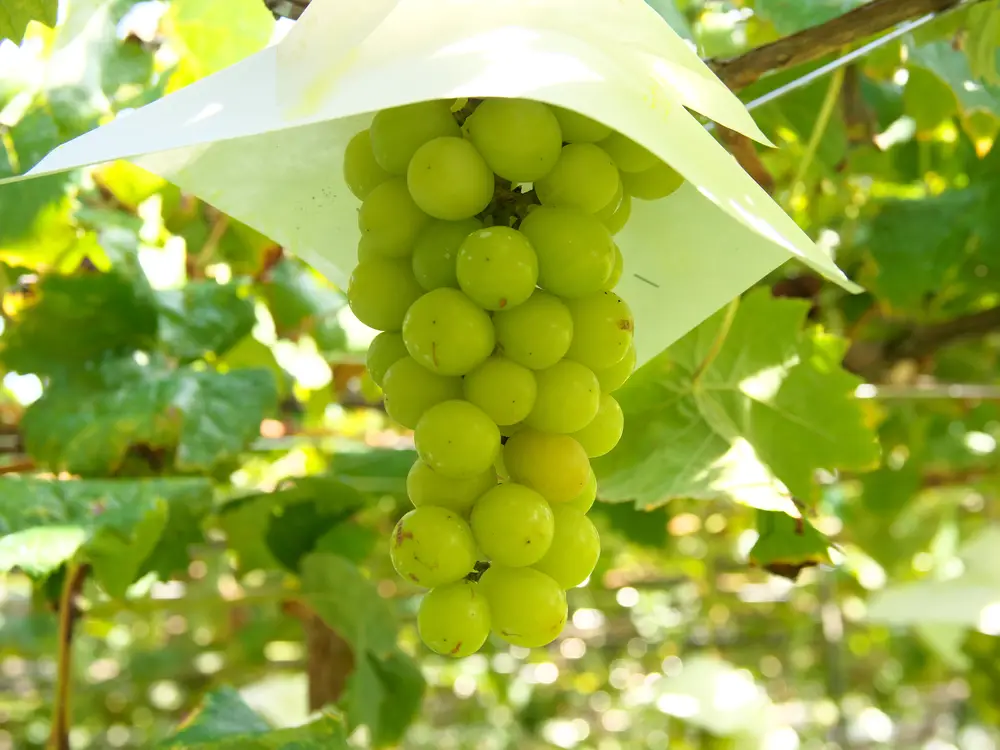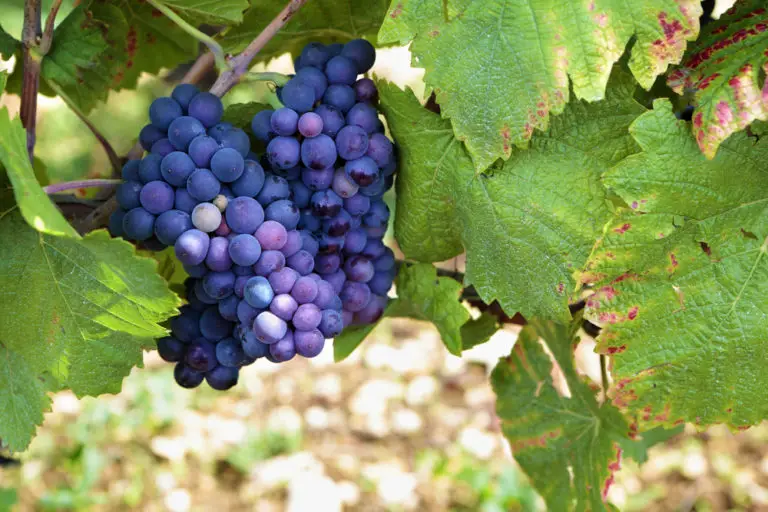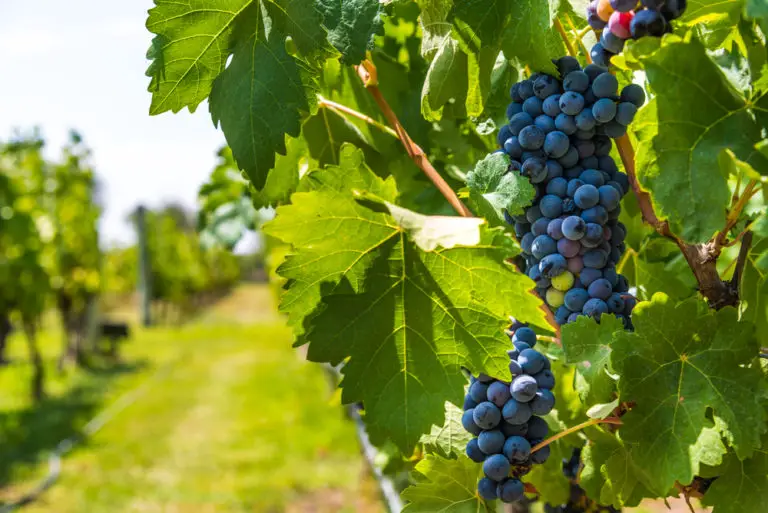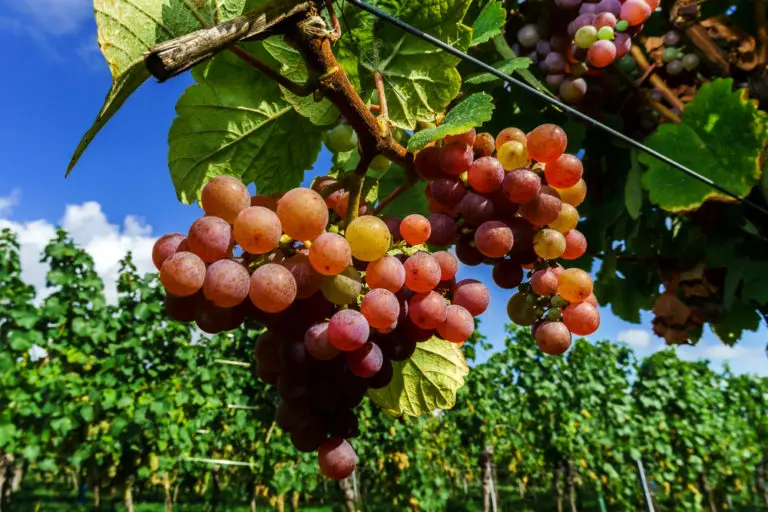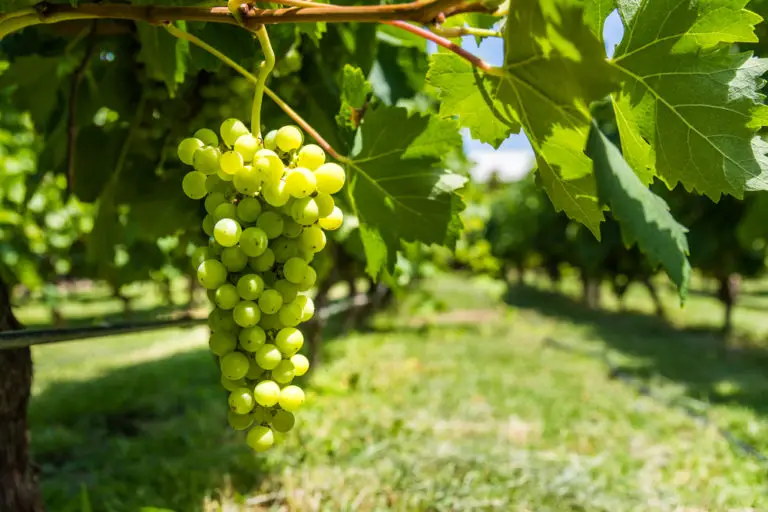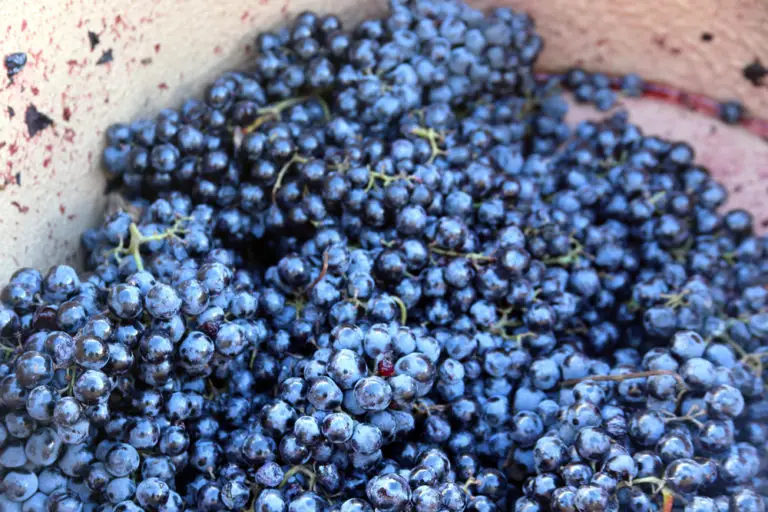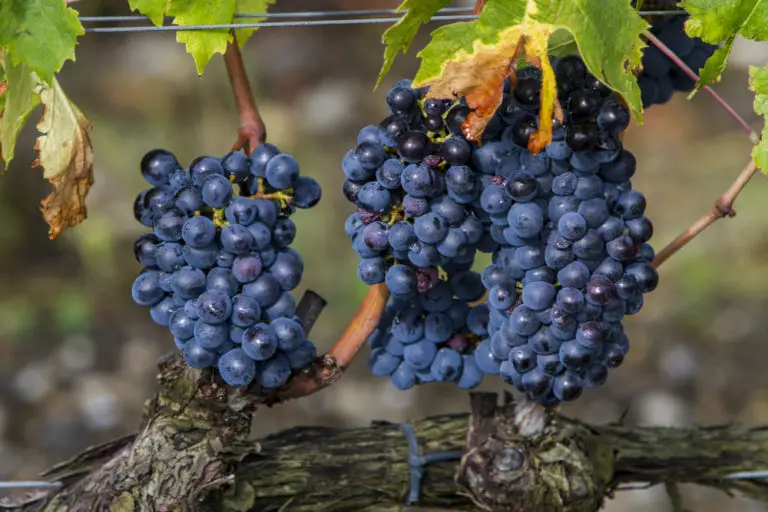Shine Muscat: The Beginners Guide (2024)
Shine Muscat is a seedless green grape variety that is crispy and fragrant. Japan developed it in the late 1980s and then commercialized it in the early 2000s. It has made a sudden emergence in the Chinese market in the last few years, and now its cultivation is taking place around China.
- What is Shine Muscat?
- Known Regions for Shine Muscat
- Popular Blends of Shine Muscat
- How to Enjoy Shine Muscat?
- How is Shine Muscat Made?
- History of Shine Muscat
- Alternatives for Shine Muscat
What is Shine Muscat?
Known as 阳光玫瑰 in Chinese, Shine Muscat meaning sunshine Rose is also a famous table grape variety in China. It fetches high prices at retail and is now the highest profit margin grape for growers. Though there are no exact production figures available, it is believed that breeders in China plant the young vines in more than 3,000 hectares of land with Shine Muscat.
These grapes are larger than an average grape and oval to oblong in shape. They are grown in medium-sized, tightly packed bunches. The skin is glossy, smooth, and taut. Depending on the specific variety, the Shine Muscat color can range from bright green, pink, to red. The flesh underneath the surface is soft, translucent, and aqueous. It is mostly seedless, but some Shine Muscat varietal may have tiny undeveloped seeds.
Japanese green grapes have a crisp quality and a juicy, soft consistency. They have high sugar content and have a sweet floral taste of honey, tropical fruits, and musk. Shine Muscat ABV is 5-7%.
Shine Muscat vs. Moscato vs. Kyoho
Moscato is famous in the Piedmont region and is the backbone of a well-established sweet wine industry in this area. Moscato, unlike the other fortified wines of Spain and France, is vinified using a different technique. It is chilled before the completion of fermentation in steel. It has a comparatively low ABV (generally around 5 to 5.5%) because of the halting of fermentation.
Shine Muscat pronunciation shine·muh·skat is a green grape variety that is fragrant and crisp. It has a refreshing and cool appearance. It has low acidity and has a high content of natural sugar. These special grapes reach their peak during August and September but are harvested from July until December.
Kyoho is a grape variety with blackish skin. Their flesh is juicy and is bigger. They have a perfect balance of refreshing sweet-sour taste and a rich sweetness. Therefore, sometimes they are also known as the “King of Grapes”. They are ripe during August and September.
Shine Muscat Characteristics
Shine Muscat is a comparatively new grape variety that has thin skin and no astringency. It has a crunchy texture and refreshing scent that makes them different from other varieties. Particularly, young people love the Shine Muscat characteristics because of their texture, and ease with which they can eat the whole skin.
The Korean grapes are also used for Daifuku and cakes by many Japanese and Western confectionery stores. It has an average sugar content of 17.0 in the excellent product rank. These grapes are a great fiber source to stimulate the digestive tract. It also contains Vitamin C, which reduces inflammation, strengthens the immune system, and promotes collagen production within the skin.
These expensive grapes also contain potassium that helps in balancing the fluid levels and other minerals like iron, magnesium, and calcium, and vitamins like B6 and K. They are commonly used for making light and aromatic, sweet wines.
Shine Muscat Taste Profile
Though the white Shiny Muscat wine is vinified, they have strong mango, beach rose, jasmine, tangerine, lychee, and orange blossom notes. It leaves tropical notes similar to sweeter spices and fruity notes of zesty orange. Though it is often served with cakes, its natural sweetness makes it perfect for the afternoon quaffer.
The unique taste of this variety of grape includes the taste of mango. Shine Muscat wine color is yellowish-green and it carries a musky taste but without a sour taste.
Shine Muscat Ageability
Every wine has a fixed shelf life. To make sure that your Shine Muscat wine lasts up to 5 years or even longer, you must follow certain storage tips to preserve your wine after purchasing. You must keep them at the right temperature and lighting to increase their shelf life after opening.
Because Shine Muscat abv is lower, experts recommend storing unopened Moscato wine bottles at no higher, or than 55⁰F.
Anything below this temperature range can lead to fluctuation that might spoil the wine. Also, you should keep it away from direct sunlight as the UV rays can impact the wine. Ideal places to store them will be in a dark environment like a cool cupboard, wine cellar, or basement.
The ideal position of laying a corked bottle is in a horizontal position. It would prevent the cork from drying out, which may be a reason for the premature decline in quality.
Known Regions for Shine Muscat
Muscat is one of the oldest known varieties of grapes in the world. It is extensively cultivated in China and Korea.
The grapevines were then cross-bred by breeders to create new cultivars with improved growth characteristics, flavors, and disease resistance. Shine Muscat came into Chinese and Japanese markets in 2006. It soon became popular and became one of China’s most popular table grapes.
Today, these types of Shine Muscat are mostly grown in Okayama and Nagano prefectures. They are also cultivated in China and are imported to Taiwan and Hong Kong.
Outside Japan, Korea is the largest producer of Shine Muscat fruit. This variety is sold in Thailand, Malaysia, Hong Kong, and Vietnam. Gyeongsan, Gimcheon, Yeongcheon, Gyeongju, and Sangju are the most famous Shine Muscat regions in Korea. It is also grown in many areas of China.
Popular Blends of Shine Muscat
The most popular Shine Muscat blends are:
- Muscat Viognier– This is a popular blend of France. Viognier is a famous white grape of the Rhône Valley, prized for its stone fruit and apricot flavors. When the two are blended, they form a wine that is highly aromatic and typically low in acid. Viognier provides the wine with structure and the fleshy flavors of apricots and peaches. Muscat brings a distinctly grapey aroma and light flavors of green melon. They can be dry, off-dry, or medium.
- Pinot Blanc Muscat White Blend– This blend is delicious and irresistible. The refreshing aroma of this wine leaves lychee, honey blossom, citrus, white peach, apricot, and white flowers notes. It is clean, vibrant, crisp, and zippy on the palate. This wine makes a great pair with seafood, shellfish, and aperitif.
How to Enjoy Shine Muscat?
Having the correct knowledge of drinking Shine Muscat or any wine is necessary. Pairing them with the right food, chilling them at the right temperature, and serving them in the dedicated stemware makes the wine more flavourful. Let us take a look at the ideal way to enjoy a glass of Shine Muscat.
Food Pairings
Shine Muscat makes an ideal pair with flavor profiles like slaty, sour, bitter, or sour. It is mostly combined with desserts, sweet brunch dishes, appetizers, or alone as an aperitif. Its fruity essence makes it difficult to pair it up with the main course. Some recommendations of Shine Muscat wine pairing:
- Seeds and Nuts: The salty-sweet factor of almonds, peanuts, and pepitas will enhance the Shine Muscat flavor.
- Spicy food: You can try this wine with Indian vindaloo curries, Thai larb, anything with mouth-tingling Sichuan peppercorns, or habanero-spiked chicken wings.
- Exotic spices: Ginger, saffron, cardamom, turmeric, and other such spices.
- Pungent or Soft Cheeses: Moscato d’Asti, Passito di Pantelleria, soft, creamy Brie and Camembert, and strong blue cheese make an amazing pair with Shine Muscat taste. You must serve this cheese at room temperature to maximize the Shine Muscat flavor profile.
- Sweet Breakfasts: Waffles or thin pancakes topped with whipped cream or fruit compote will make the flavors of Shine Muscat come alive.
- Cake: Vanilla cake and chocolate cake work well with this wine.
- Fruit Desserts: Pies, semifreddo, cobblers, or any dessert with berry or fruit components works well with the natural fruitiness of this wine.
Temperature
Shine Muscat, or perhaps, any Muscat wine, is best enjoyed chilled. It is preferable to have Moscato that is too cold instead of too warm. Usually, this wine can be cooled for longer at about 6-8°C and still sounds delicious.
Once open, the wine bottles must be preserved in significantly cold temperatures to delay the oxidation reactions. Remember, Shine Muscat taste will still change in your fridge. You can keep it refrigerated for up to 3 days after opening.
Stemware
The perfect stemware to drink Shine Muscat will have a U-shape and often a more upright design. Usually, a slimmer bowl is used because the wine does not need to be aerated much. It should be filled up to the ⅔ of the glass, to allow aromas to be released while helping in maintaining the cooler temperature, simultaneously.
It should also have a longer stem to make it easier for people to hold the stem rather than the bowl. Holding the bowl directly can transfer your body heat to the glass, making it warm faster. They should ideally be served in a glass with a slightly bigger opening. It will let the wine touch the tip and sides of the tongue, allowing you to differentiate between crispiness and sweetness.
How is Shine Muscat Made?
The winemaking process has been taking place for thousands of years. It is not just an art, but a lot of science is also involved. The tiniest mistake can lead to a major impact. Shine Muscat winemaking process involves five steps, let us have a look at them in detail:
- Harvesting: Grapes contain all the required tannins, acids, and esters to make a wine delicious. The harvesting time determines the acidity, flavors, and sweetness of the Shine Muscat wine ingredients that give it the perfect balance. Weather also plays an important role in this process. The grapes are either hand-picked or machine-picked from the Shine Muscat vineyard and are taken to the winery. There, they are sorted in bunches, and any under ripe or rotten grapes are removed.
- Crushing: After sorting, the grapes are destemmed and crushed. Usually, mechanical press crushes the grapes to form a ‘must’. It contains the solids of the grapes. The skin and seeds (if any) are removed during this process to stop them from influencing the color of the wine.
- Fermentation: The fermentation process starts naturally within 6 to 12 hours after wild yeast is added to the must. Many winemakers also add cultured yeast to ensure consistency and outcome. This process is stopped in the middle to prevent the whole sugar from converting.
- Clarification: In this process, the tannins, dead yeast, and proteins are removed from the wine. Sometimes, substances are added for the fining process, and filters are used to catch the larger particles. The wine is then transferred to another tank for bottling and aging.
- Aging and Bottling: The wine is then bottled or kept in stainless steel for aging.
History of Shine Muscat
Native to the Mediterranean, Muscat grapes are considered to be the oldest variety in the World. Winemakers have been cultivating these grapes for 3000 years. Over time, these vines were spread into Asia via the silk road. Korea and China began to cultivate them extensively. In the late 19th Century, these grapevines were initially imported into Japan during the Meiji era.
Here, many private and public breeders cross-bred them to create many new cultivators. It was done to improve growth statistics, flavors and make them disease resistant.
Shine Muscat history started in 2006 when it was released in the Japanese and Chinese markets and soon became one of China’s most popular table grapes. In Japan, Okayama and Nagano grow most of the Shine Muscat grapes. They are also cultivated in China and imported to Taiwan and Hong Kong.
Alternatives for Shine Muscat
There might be a possibility that Shine Muscat might not be available at the place you live, or it might be out of stock when you want to enjoy it with your favorite meal.
Or you might like the taste of Shine Muscat and want to try more wine similar to it. In such cases, you can try other wines like Gewürztraminer, Riesling, or Pinot Grigio. Here are some details about how these two wines are similar or different.
Gewürztraminer
It is a famous sweet white wine that is famous for its fruity, bold aromas. You can find hints of ripe pear, citrus fruits, and lychee when sipping this variety. The taste of lychee can be easily recognized and distinguished, especially if you do not snack it daily. Most people describe it as a grape with a hint of rose.
Riesling
If you are looking to stick with sweet wine, then you must try riesling. It is a super aromatic wine with hints of ripe nectarine, lemon peel, and tree fruit flavors. They can vary at the sweetness level, but you will find riesling from California and Germany closest to Shine Muscat.
If you are looking for something dry, then you can try a riesling from the Finger Lakes region of New York, the Alsace region of France, and the wine regions of Washington State.
Pinot Grigio
It is yet another wine that wine lovers find refreshing. It is originally from Italy, and its history runs parallel to Moscato’s. This wine is crisp and bright, free from any flavors. You will still notice the flavors of granny smith apple, citrus fruits, and stone fruits.
FAQ
Why is Shine Muscat so expensive?
Shine Muscat price is more as compared to other varieties because of its good side. Many people say that it is very delicious and has a mango-like taste, making them the most expensive grape.
What does Shine Muscat taste like?
Muscat fruit Japan has a unique taste with Mango flavors. They are musky but are not sour. Therefore, it is sold at an expensive rate than most other grapes.
Is Shine Muscat a grape?
Shine Muscat grape is a white variety that is mostly grown in China, Japan, and Korea. It is a hybrid that was developed in Japan.
How much do Shine Muscat grapes cost?
At grocery stores, the Shine Muscat grapes are sold at the price of 100 yuan per kilogram. From the wholesale market, you can purchase it at around 20-40 Yuan.
What is the difference between grapes and Muscat?
Muscat is a white grape variety. It is used to make ween white wine. The grapes are usually round, small, smooth-skinned. They can be green, red, or purple.
What is Korean Shine Muscat?
The Shine Muscat that is grown in Korea is called Korean Shine Muscat. Their prices can go up to 200 yuan per kilogram (for premium quality). Lower quality varieties are sold at 100 Yuan per Kilogram.
How long do Muscat grapes last?
Shine Muscat Grapes can last for about 5 to 10 days in the refrigerator and between 2 and 4 days on the counter.
Are Muscat and muscadine grapes the same?
No, Muscadine has no relation whatsoever to Muscat. They only have a similar name which creates confusion among people.
Is Muscat a sweet wine?
Muscat may be produced as a medium, dry, sparkling, sweet, or even dessert wine. It varies based on the region of production and the winemaking method used.
Do Shine Muscat grapes have seeds?
Shine Muscat is a seedless grapes variety that is crispy and fragrant. Sometimes, you can find a few varieties and small undeveloped seeds in these grapes.

